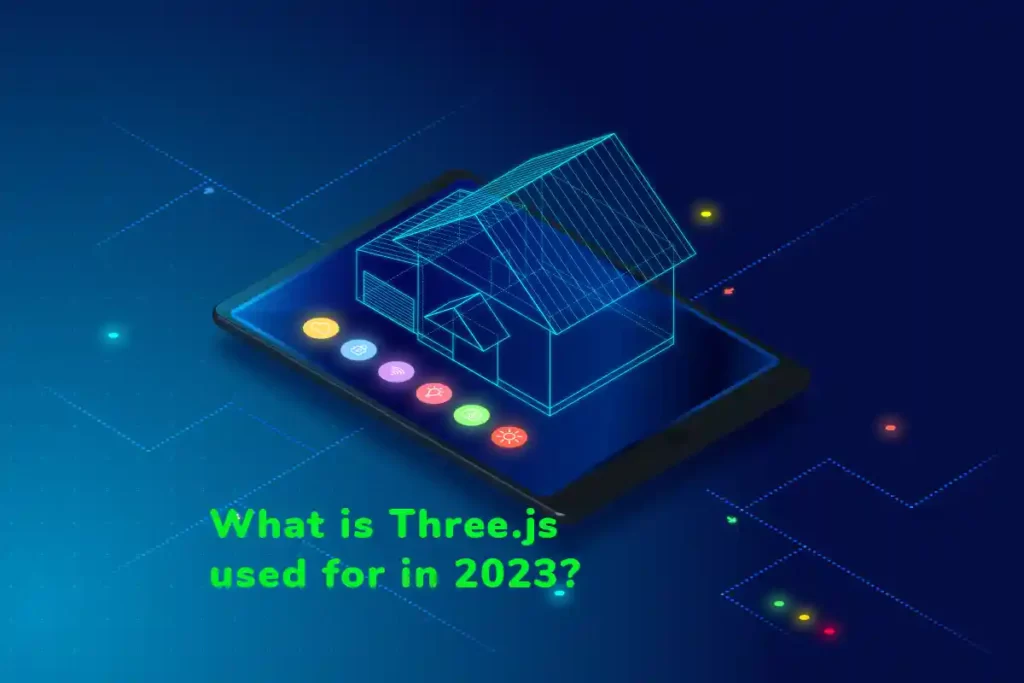Three.js has revolutionized how developers create and showcase 3D graphics and interactive experiences on the web. In 2023, Three.js continues to be a vital tool in the arsenal of web developers, enabling them to create immersive, visually stunning, and interactive experiences on the web. Three.js app development cost always remains competitive, whether it’s 3D visualization and graphics, virtual reality and augmented reality, data visualization, gaming, interactive experiences, or education and learning. Three.js empowers developers to unlock the creative possibilities of the web.
In this blog post, we will explore the key uses of Three.js in 2023, highlighting its role in empowering developers to build immersive and visually stunning web applications.
3D Visualization and Graphics
One of the primary reasons many companies hire Three.js experts is to use the framework to build apps for 3D visualization and graphics. With its rich features and capabilities, Three.js enables developers to create lifelike and interactive 3D environments directly in the browser. In 2023, as the demand for immersive experiences grows, Three.js will prove to be an invaluable tool.
By leveraging Three.js, developers can easily render 3D models, textures, and animations, bringing static content to life. The library provides various rendering options, including WebGL, CSS3D, and SVG, ensuring compatibility across browsers and devices. With support for lighting effects, shadows, and post-processing effects, Three.js allows developers to create visually appealing scenes with realistic lighting and textures.
Furthermore, Three.js provides advanced camera controls, allowing users to navigate and interact with 3D scenes effortlessly. Whether creating architectural visualizations, interactive product showcases, or gaming experiences, Three.js empowers developers to push the boundaries of 3D graphics on the web.
Virtual Reality (VR) and Augmented Reality (AR)
By combining Three.js with WebXR, developers can create VR and AR applications that can be accessed through compatible headsets or devices. Three.js simplifies the rendering and positioning of 3D objects in 3D space, enabling developers to design engaging and interactive virtual environments. With WebXR’s capabilities, users can explore these virtual worlds and interact with objects using motion controllers or gestures.
Whether building immersive virtual tours, educational simulations, or interactive training modules, Three.js empowers developers to unlock the potential of VR and AR on the web. This accessibility and versatility make Three.js an ideal choice for bringing captivating virtual experiences to many users.
Gaming and Interactive Experiences
In addition to its applications in 3D visualization and data visualization, Three.js is also widely used in developing gaming and interactive experiences on the web. With its support for rendering 3D graphics, handling user input, and managing animations, Three.js provides a solid foundation for creating browser-based games and interactive applications.
Developers can leverage the power of Three.js to build engaging game environments, implement physics simulations, and create interactive elements. The library’s integration with popular game development frameworks like Babylon.js and PlayCanvas expands its capabilities further, enabling developers to build sophisticated and immersive gaming experiences.
Beyond gaming, Three.js can also create interactive presentations, multimedia experiences, and virtual tours. Its ability to render 3D scenes, integrate audio and video, and handle user interactions makes it ideal for developing captivating interactive applications that engage users in unique and memorable ways.
Architectural Visualization and Prototyping
Another valuable use of Three.js in 2023 is architectural visualization and prototyping. Architects, interior designers, and real estate developers can leverage the power of Three.js to create immersive and interactive virtual representations of architectural designs.
With Three.js, developers can create realistic 3D models of buildings, interior spaces, and landscapes, allowing stakeholders to explore and interact with the designs in a virtual environment. By incorporating interactive elements such as lighting controls, material selection, and furniture placement, Three.js empowers users to customize and personalize their virtual experience. This level of interactivity aids in making informed design decisions and facilitates effective communication between architects, clients, and other project stakeholders.
Furthermore, Three.js can be used to create interactive prototypes for architectural projects. By combining the library’s 3D rendering capabilities with user interface elements, developers can build functional prototypes that showcase the flow and functionality of a proposed design. This helps architects and designers validate their ideas, gather feedback, and refine their designs before committing to construction.
Product Configurators and E-commerce
In 2023, Three.js will continue to play a significant role in product configurators and e-commerce. Companies across various industries can utilize Three.js to create interactive product visualization and customization tools that enhance the online shopping experience.
With Three.js, developers can create 3D models of products and allow users to rotate, zoom, and inspect them from different angles. By integrating customizable options such as colors, materials, and features, users can personalize the product to suit their preferences. This level of interactivity enables customers to make informed purchase decisions by visualizing the final product configuration before purchasing.
Product configurators powered by Three.js can be particularly beneficial in the automotive, furniture, fashion, and electronics industries. Customers can explore different variations and combinations of products, facilitating a more engaging and interactive shopping experience.
Furthermore, Three.js can be integrated with e-commerce platforms to transition from product customization to purchasing seamlessly. By incorporating shopping cart functionality and secure payment gateways, developers can create a cohesive and immersive shopping experience within the virtual environment.
Education and Learning
Three.js has also found significant utility in the field of education and learning. In 2023, as online education and e-learning grow, Three.js will provide educators and developers with a powerful tool to create interactive and immersive learning experiences.
By leveraging Three.js, developers can build virtual laboratories, interactive simulations, and educational games that enhance learning. The ability to visualize complex concepts in 3D, manipulate objects, and interact with virtual environments creates a more engaging and interactive learning environment for students.
Moreover, Three.js supports the integration of educational content with other web technologies like HTML, CSS, and JavaScript, allowing developers to create interactive lessons and quizzes. This flexibility makes Three.js an effective tool for fostering active learning and promoting understanding in various academic disciplines.
Summarizing
As the demand for captivating and engaging web experiences grows, Three.js plays a pivotal role in shaping the future of web development, offering endless opportunities for innovation and creativity.



